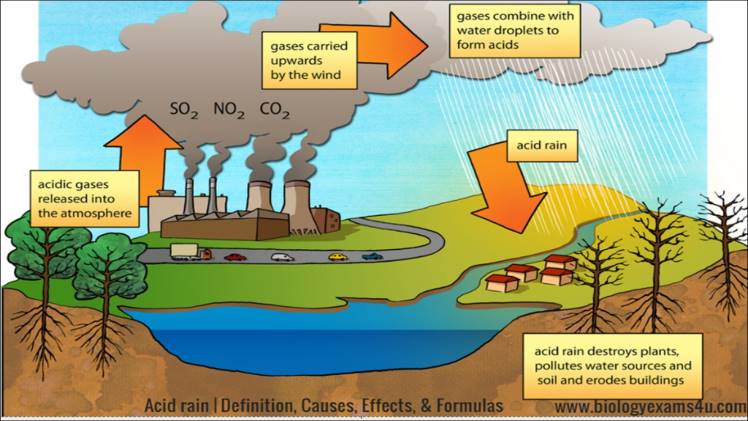What is Acid Rain?

Acid Rain is a form of precipitation that has a pH of less than 5. It occurs mainly in industrialized areas with high levels of pollution and can also fall on land or seas far from its source. This occurs because pollutants such as sulfur dioxide and nitrogen oxides can travel from factories, power plants, vehicles and oil refineries to the air where they mix with water vapor and oxygen. The chemicals turn into sulfate and nitric acids that are carried by the wind to far-off places, blanketing them in pollution.
It can erode soil, change the composition of lakes and streams, and deteriorate limestone and marble buildings and monuments like gravestones. It can also deplete fish stocks.
In addition, it can corrode metals that have been leached from the soil and into streams, lakes and reservoirs or into old lead and copper pipes in home water supplies. People who live in regions where there is high acid rain can develop health problems such as lung disease, heart attacks and difficulty breathing. Please click for more info: Jio Rockers Kannada
There are steps you can take to reduce the amount of acid rain that falls on your area. One way is to reduce your energy use in your home or office by turning down the thermostat or insulating it. Another is to carpool, walk or ride the bus instead of driving.
You can also help keep pollutants out of the air by making sure that factories and power plants are properly ventilated and by using renewable energy sources to generate electricity. You can also help by reducing emissions of sulfate and nitrogen oxides, two of the main chemicals that contribute to acid rain.
Sulfur dioxide and nitrogen oxides are produced by anthropogenic (human-made) sources such as fossil fuel power plants, factories, cars and oil refineries. They can also be released naturally from volcanoes or geysers, when the gas rises into the air and mixes with water vapor, oxygen and other chemicals.
Volcanoes produce a wide range of acid-producing gases, including sulfate and nitrate particles that can enter your lungs and cause diseases and health problems such as heart attacks. Sulfur dioxide is also a major contributor to acid rain in the United States and Canada, due to power plants and automobiles.
The biggest source of acid rain today is from power stations that burn coal, oil and other fossil fuels to generate electricity. They emit two-thirds of the total amount of sulfate and nitrogen oxide that is found in the atmosphere.
Fortunately, these pollutants are being reduced by the EPA and other agencies, but there is still work to be done to minimize the effects of acid rain on our health. The EPA is working on ways to improve the efficiency of power plants, as well as to reduce emissions from gasoline-powered vehicles and other sources that can contribute to acid rain.
Acid rain is a major environmental concern that requires strong action by all of us. To help, you can recycle more, cut down on fossil-fuel burning and use renewable sources of electricity such as solar or wind power.
